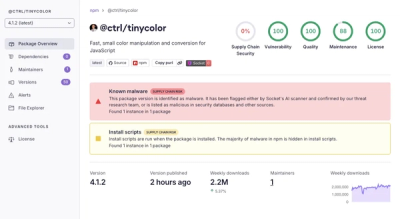redis-simple-cache
redis-simple-cache is a pythonic interface for creating a cache over redis.
It provides simple decorators that can be added to any function to cache its return values.
Requirements:
redis 2.6.2
redis-py 2.7.1 (see requirements.txt file)
Installation:
pip install redis-simple-cache
or to get the latest version
git clone git://github.com/vivekn/redis-simple-cache.git
cd redis-simple-cache
python setup.py install
Usage:
from redis_cache import cache_it_json
@cache_it_json(limit=1000, expire=60 * 60 * 24)
def fib(n):
if n == 0:
return 0
elif n == 1:
return 1
else:
return fib(n-1) + fib(n-2)
limit is the maximum number of keys, expire is the expire time in seconds.
It is always recommended to specify a expire time, since by default redis-server will only remove keys with an expire time set in a event of full memory. But if you wish your keys to never expire, set expire to None.
Note that function arguments and result must be pickleable, since cache_it uses the pickle module.
It is also possible to use redis-simple-cache as a object-oriented cache:
>> from redis_cache import SimpleCache
>> c = SimpleCache(10) # cache that has a maximum limit of 10 keys
>> c.store("foo", "bar")
>> c.get("foo")
'bar'
>> "foo" in c # efficient membership test, time-complexity O(1)
True
>> len(c) # efficient cardinality calculation, time-complexity O(1)
1
>> c.keys() # returns all keys, time-complexity O(N) with N being the cache c cardinality
set(['foo'])
>> c.flush() # flushes the cache, time-complexity O(N) with N being the cache c cardinality
>> "foo" in c
False
>> len(c)
0
Check out more examples in the test_rediscache.py file.
Advanced:
Advanced users can customize the decorators even more by passing a SimpleCache object. For example:
my_cache = SimpleCache(limit=100, expire=60 * 60, hashkeys=True, host='localhost', port=6379, db=1, namespace='Fibonacci')
@cache_it(cache=my_cache)
def fib(n):
# ...
hashkeys parameter makes the SimpleCache to store keys in md5 hash. It is True by default in decorators, but False by default in a new SimpleCache object.
host, port and db are the same redis config params used in StrictRedis class of redis-py.
By default, the namespace is the name of the module from which the decorated function is called, but it can be overridden with the namespace parameter.
AUTHOR: Vivek Narayanan
CONTRIBUTORS:
Flávio Juvenal
Sam Zaydel
David Ng
DJ Gilcrease
Johannes Maximilian Toball
Robert Marshall
Ben Hayden
LICENSE: BSD



